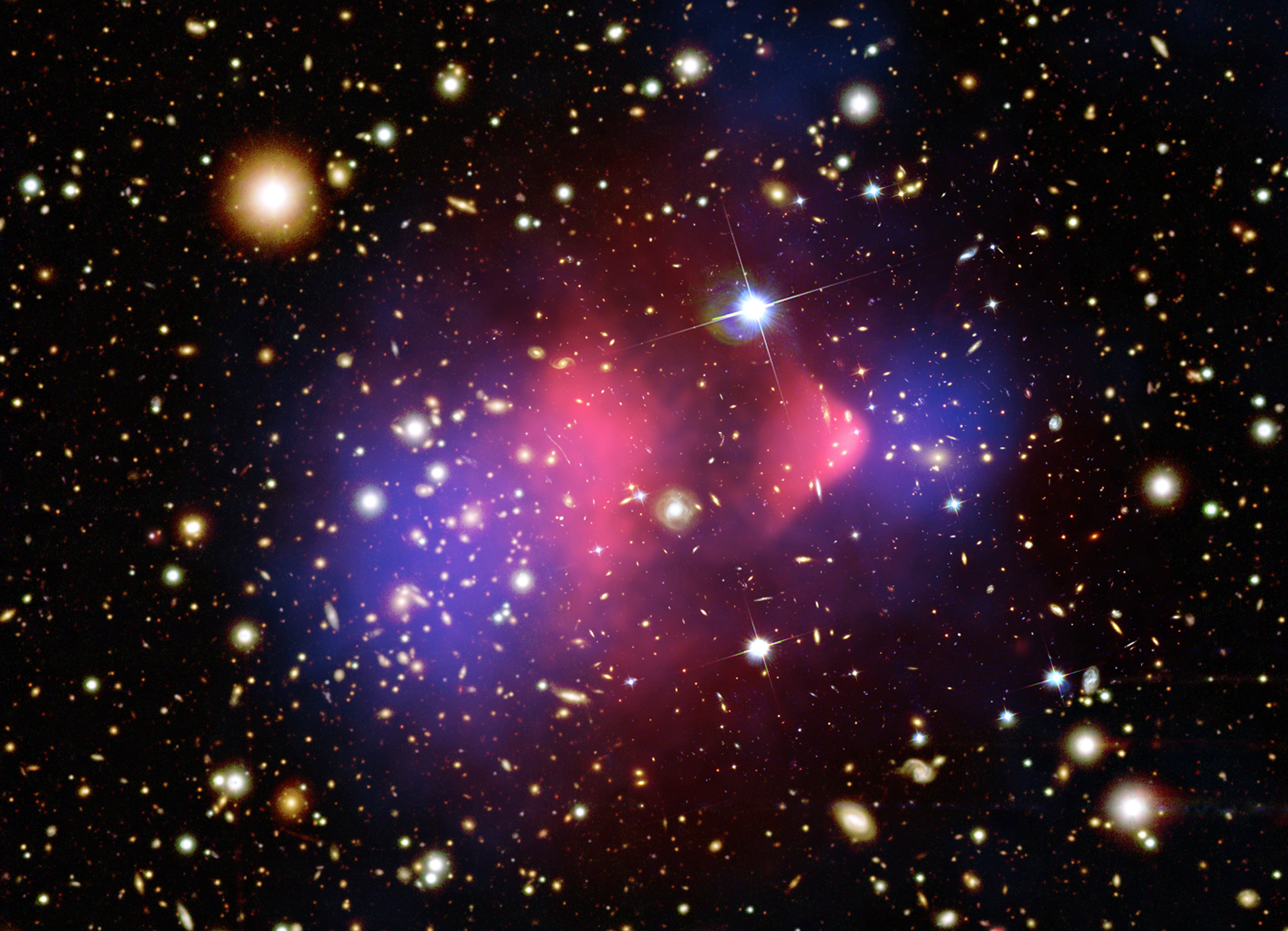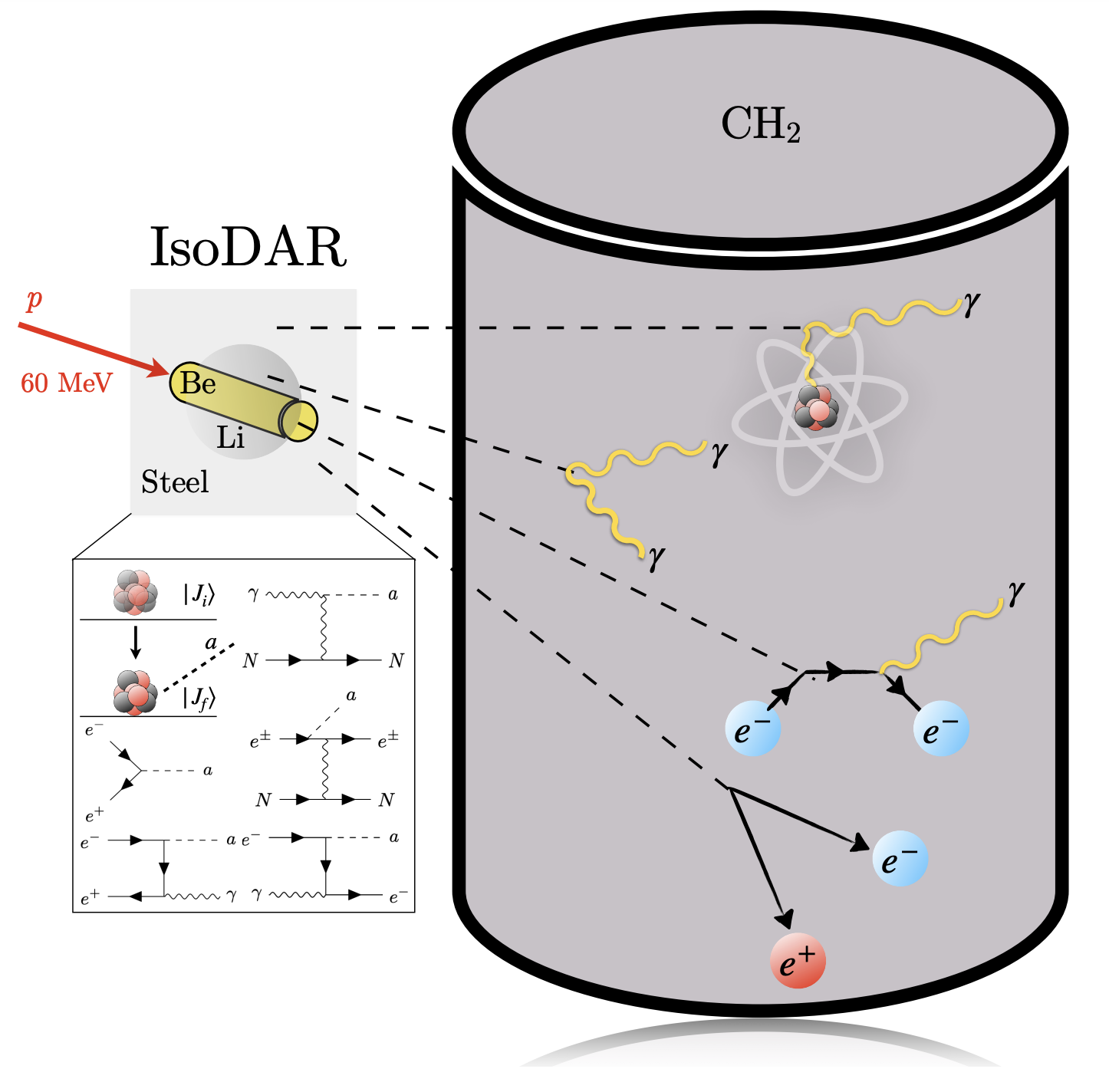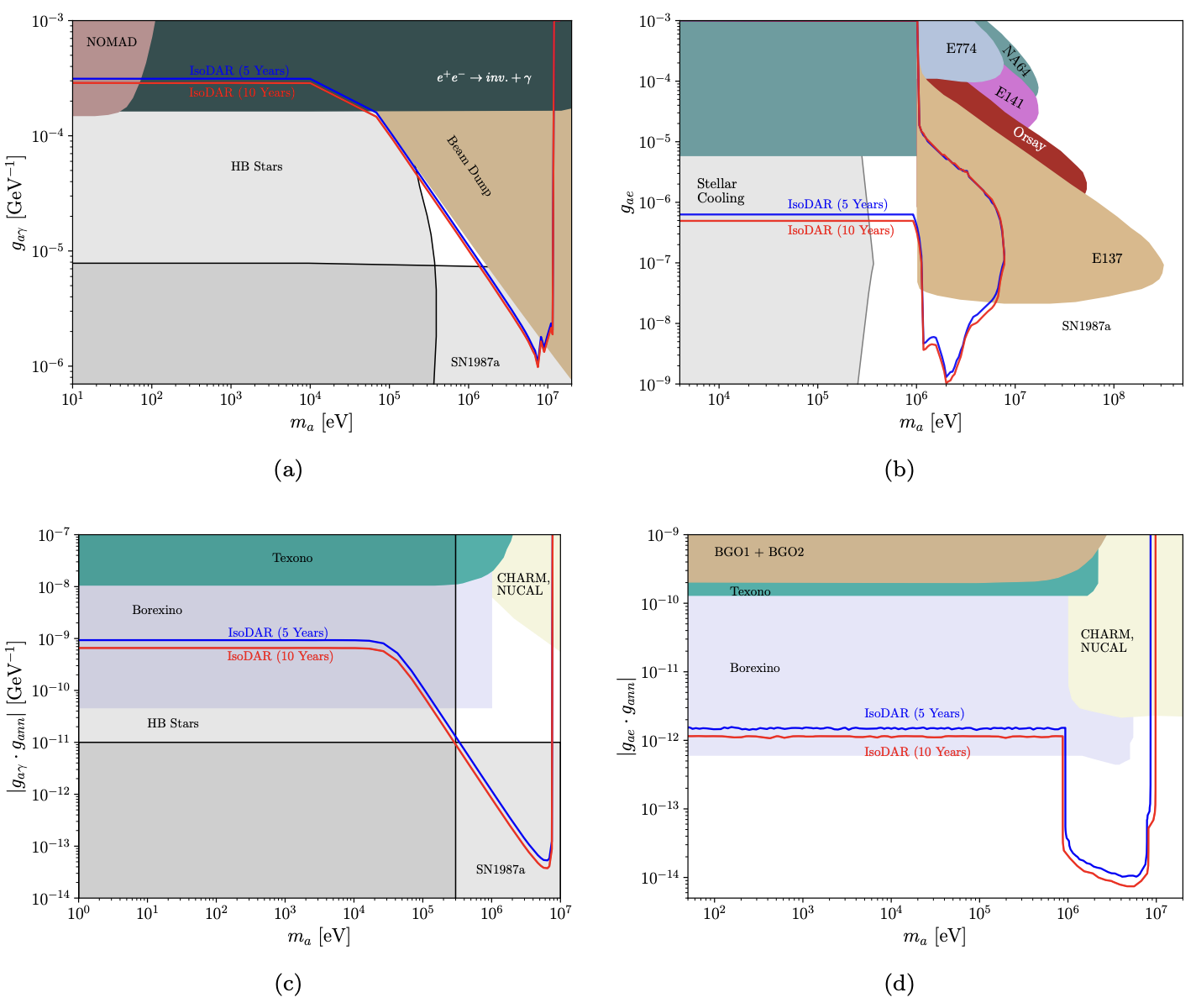Axion-Like Particle Searches
The Strong CP Problem and Axions
Among the many puzzles of the Standard Model of particle physics, one concerns quantum chromodynamics (QCD), the theory that describes the strong force that holds nuclei together. In other pieces of the Standard Model, symmetries are often violated. For example, the weak nuclear force is famous for violating parity (P) symmetry. If you observed two particles interacting via the weak force, and then viewed the same process in a mirror, you wouldn't see mirrored results; they wouldn't match each other's reflections. Two additional symmetries are charge conjugation (C, corresponding to the exchange of a particle with its own antiparticle) and time reversal (T). As it turns out, the weak force not only violates C and P symmetries separately, but also the combined CP symmetry. Based on experimental observations, a conundrum emerges concerning QCD: the strong force seems to conserve CP symmetry, but there is no fundamental reason why.
As an answer to this, in the late 1970s, Roberto Peccei and Helen Quinn with follow-up from Frank Wilczek and Steven Weinberg proposed a mechanism that resolved the strong CP problem, from which the idea of the axion (named after a brand of soap, the particle "cleans up" the strong CP problem) particle was born. Axions were postulated to be extremely light and rarely-interacting particles that naturally emerge from extensions of the Standard Model. Axions are characterized by their low mass, low interaction strength with ordinary matter, and a distinctive coupling to electromagnetic fields. Although axions have not been directly detected yet, they have garnered significant attention from both theoretical and experimental physicists due to their potential to address not only the Strong CP problem but also other outstanding issues in cosmology and particle physics; incredibly, the same particle that could resolve the strong CP problem could be a candidate for dark matter, the unseen matter in the universe that astrophysical observations predict should exist. Various experimental efforts, such as the Axion Dark Matter Experiment (ADMX) and the CERN Axion Solar Telescope (CAST), are ongoing in the search for axions, and their discovery would have profound implications for our understanding of fundamental physics.

Hunting ALPs with IsoDAR
IsoDAR does not search for axions, but the closely related axion-like particle (ALP). ALPs encompass a broader class of hypothetical particles that share some properties with axions but may have different masses, couplings, or interactions than traditional axions. In particular, IsoDAR is capable of searching for ALPs with masses of around 10 keV - 10 MeV. For perspective, the mass of the electron falls directly in the middle of this range, having a mass of 511 keV. Intuitively, it is reasonable that if a physicst were to hunt for a new particle, they would start their search by first exploring new particles that have a mass similar to those we know to exist.
As IsoDAR's target is irradiated with protons, photons are produced by nuclear de-excitations, and electrons and positrons are produced by the showers of particles resulting from the proton collisions. ALPs are thought to couple to these electrons, positrons, and photons and can be produced in IsoDAR's target. These ALPs, dark matter particles which interact very rarely with ordinary matter, could potentially then make their way into the detector, where they produce Standard Model particles that are detectable. This is the well-known "light-shining-through-walls" strategy for ALP detection. Based on the measured energies of the particles seen in the liquid scintillator, we can estimate the mass that the ALP had when it made its way into our detector. IsoDAR's advantage in searching for ALPs lies in its method of production: the nuclear de-excitations occur at distinct energy peaks, which would be apparent in the detector signal but would be washed out at higher energies.
In the figure below, we show IsoDAR's 5- and 10-year reaches into the viable parameter space of ALP couplings to Standard Model particles and ALP masses. Importantly, IsoDAR can probe into a region of parameter space known as the "cosmological triangle," which means there are ALP masses and couplings that have yet to be constrained by any known experimental or astrophysical observation.


Source: Phys. Rev. D 107, 095010 (2023).